Top 10 Countries Have The Most Islands In The World
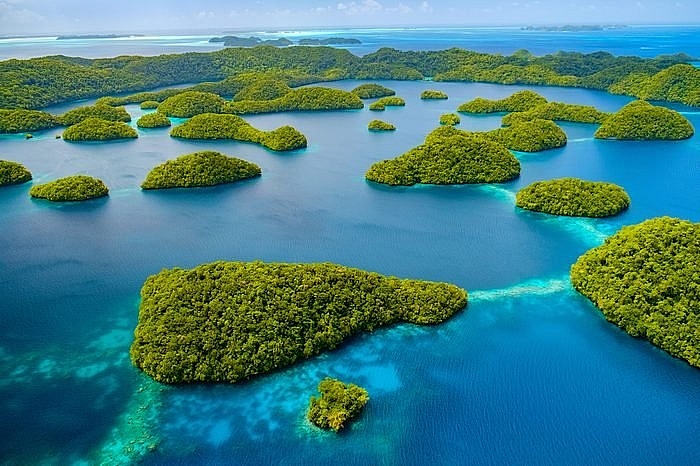 |
| Top Countries Have The Most Islands In The World |
Which country has the most islands?
The world is marked by hundreds of thousands of islands, which are classified as landmasses permanently above water but not identified as a continent, such as Australia. The largest island on earth is Greenland, but there are countries made up mostly, or entirely, of archipelagos—chains, clusters, or collections of islands. In some cases, like Norway and Sweden, these amount to more than 200,000 islands within the countries' borders.
Quick Facts
*Greenland is the largest island in the world.
*Norway and Sweden have the most islands in the world, largely in the Arctic.
*Canada has the longest coastline in the world, bordering three oceans with its thousands of islands.
*The winner — by quite some margin — is Sweden. This Northern European nation is home to a whopping 221,800 mostly uninhabited islands, according to Statista, a German company that provides statistics. This number includes islands as small as 270 square feet (25 square meters).
*Finland, the runner-up, has an estimated 188,000 islands, while Norway, which rounds out the top three, is a long way behind, with around 55,000, according to Statista. All three countries are part of the Nordic region (which also includes Iceland and Denmark).
What is the true definition of an island?
To most people, an island is simply a swath of land surrounded by water. But why is Australia, which matches this description perfectly, deemed a continent, while Greenland, which is only three times smaller and has similar attributes, dubbed "the world's largest island" by Britannica?
While there is no strict, comprehensive definition of what a "continent" is, the general consensus — and the one favored by ThoughtCo, an online education resource — is that a continent should lie on its own tectonic plate. Greenland, because it sits on the North American plate, doesn't align with this criteria, hence why it is generally regarded as an island.
So, while it could be concluded that Sweden has won the island contest on a technicality, the subject is certainly up for debate.
The author of the 2005 study posits that Sweden has only 401 islands, at least when the "island" definition is narrowed to land bodies with permanent human populations but without a permanent mainland connection. So, maybe we need to agree on what an "island" is — a good thing to contemplate on a future vacation to a secluded "island" beach, perhaps.
1. Sweden - 267,570
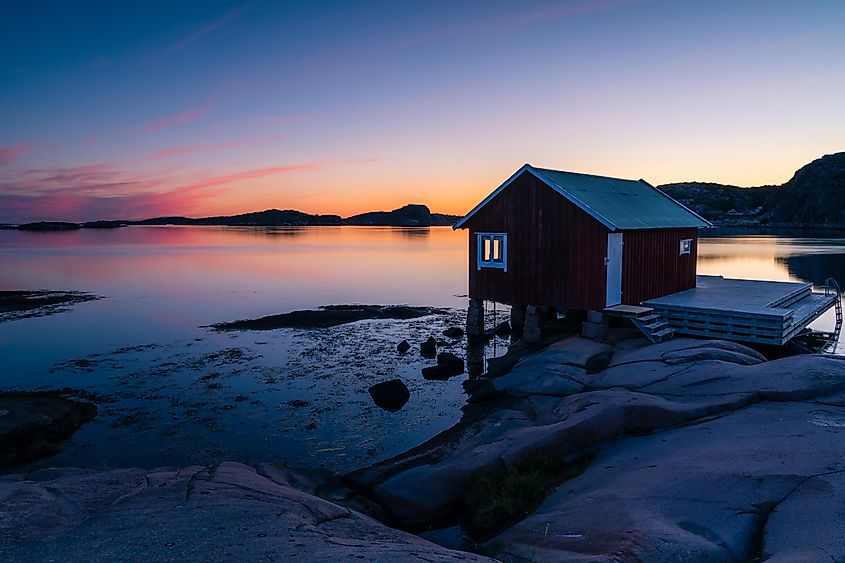 Hunnebostrand, Sweden. Image credit: excalibur68/Shutterstock
Hunnebostrand, Sweden. Image credit: excalibur68/Shutterstock One of earth's northernmost countries, Sweden has 221,831 counted islands, about 24,000 of which are open to the public through the country's Right of Public Access policy, which allows anyone to hike through lush forests and fields, and forage for berries or mushrooms without asking landowner permission, so long as they show respect for the natural environment and private property. Though Sweden is the country with the most islands in the world, less than 1,000 of them are inhabited.
The country's thousands of islands can be found largely along its eastern coastline from the far north to the deep south, with some also located off Sweden's west coast. The most renowned is the Stockholm Archipelago, which is comprised of nearly 30,000 islands, islets, and rocks between Öregrund in the north and Landsort in the south. The Gothenburg Archipelago lines the west coast along with the Bohuslän Archipelago, which is made up of more than 8,000 islands and islets and has been ranked as the seventh-most beautiful natural wilderness area in the world by CNN Travel.
2. Norway - 239,057
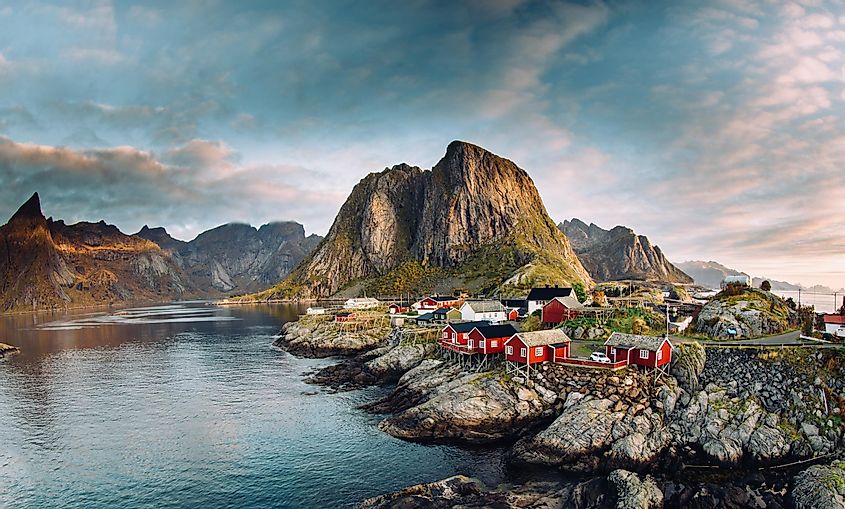 Lofoten Islands, Norway. Image credit: yari2000/Shutterstock
Lofoten Islands, Norway. Image credit: yari2000/Shutterstock Norway is renowned for its hundreds of thousands of islands, the most famous of which are the Lofoten Islands that dot the Norwegian Sea, above the Arctic Circle. The Lofoten Islands are being certified as a sustainable destination, which is a designation given to places that mitigate the negative impacts of tourism by preserving the natural environment and culture, strengthening social values and economic vitality.
The Lofoten Islands boast a milder climate than other locales that dip into the Arctic Circle, despite the turbulent waters of the sea they inhabit, due to the Gulf Stream. Known for their vast fishing opportunities, the midnight sun during the summer and the northern lights during winter months, the Lofoten Islands have been a draw to tourists and artists alike, bringing inspiration to travellers, painters, poets, photographers, and writers.
Many islands are also found in the Western Fjords, a region of Norway characterized by deep valleys, steep hills, rivers, waterfalls, and countless islands with rugged topographical features. Similarly, the lowland of Norway, known as the South Coast, is also home to several small islands.
3. Finland - 178,947
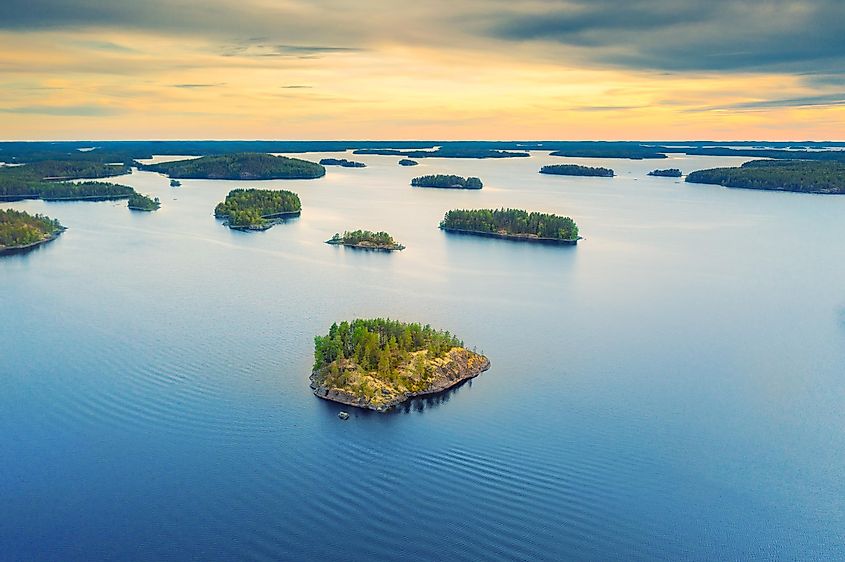 Saimaa Lake, Finland. Image credit: Della_Liner/Shutterstock
Saimaa Lake, Finland. Image credit: Della_Liner/Shutterstock Like its neighboring countries of Sweden and Norway, Finland is made up of a large number of rocky islands off its coast, totalling 178,947, with many in the region of Archipelago Finland running from the country's southwestern coast to the Baltic Sea.
Archipelago Finland includes the Aland Islands, at the entrance to the Gulf of Bothnia. Ownership of the islands came into question after the First World War, when both Finland and Sweden laid claim to the Alands, with Sweden claiming the islands were culturally more Swedish than Finnish. However, the League of Nations declared the Aland Islands part of Finland in 1921, stating the islands were most physically linked to Finland in winter months by frozen seawater and thus essential to the country's defense lines.
4. Canada - 52,455
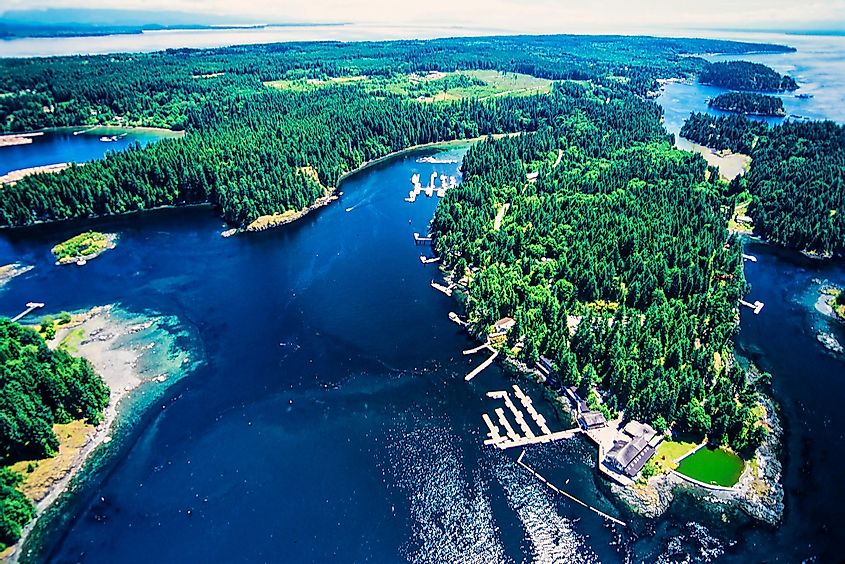 Quadra Island, BC, Canada. Image credit: Russ Heinl/Shutterstock
Quadra Island, BC, Canada. Image credit: Russ Heinl/Shutterstock As the second-largest nation by land area at just under 3,860,000 square miles (10 million square km), Canada boasts a total of 52,455 islands in the Arctic, Pacific and Atlantic Oceans, which helps account for its status as the country with the longest coastline in the world. Of its islands, three rank in the top 10 largest in the world: Baffin Island, Ellesmere Island and Victoria Island, all part of the Arctic Archipelago.
The Arctic Archipelago lies north of the country, in the Arctic Ocean, and is made up of an area of more than 550,000 square miles (1.4 million square km). To the southeast, these landmasses are an extension of the Canadian Shield, one of the largest continental shields in the world; in the south they are part of the Arctic lowlands and in the north the islands are part of the Innuitian Mountains.
5. United States - 18,617
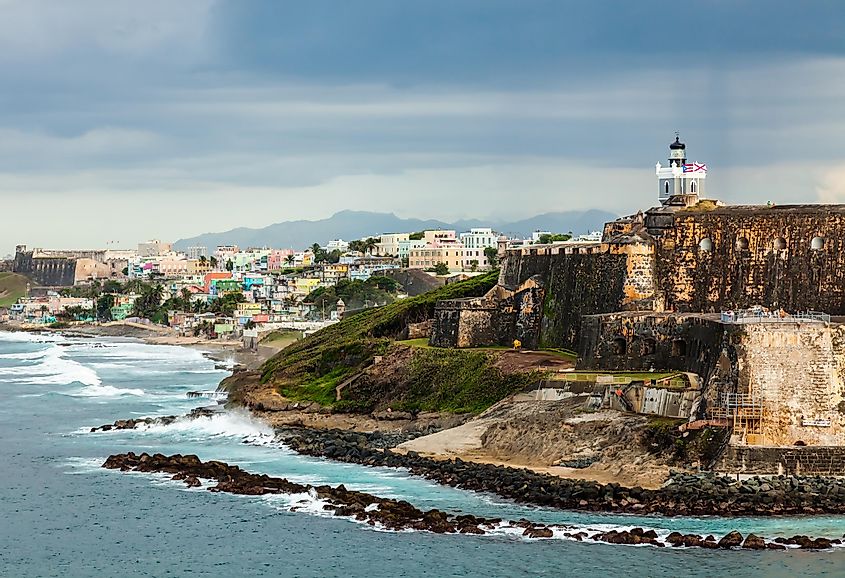 Puerto Rico, US. Image credit: Gary Ives/Shutterstock
Puerto Rico, US. Image credit: Gary Ives/Shutterstock The United States claims ownership of 18,617 islands, including well-known locales like the Hawaiian Archipelago, and census data is collected from some of those island areas as well as its 50 states and the District of Columbia. These islands include Puerto Rico, the U.S. Virgin Islands, Guam, American Samoa, and the Commonwealth of the Northern Mariana Islands. Several smaller island regions are also included, such as the Corn Islands, Navassa Island, Quita Sueño Bank, Roncador Cay, and Serrana Bank, Baker, Howland, and Jarvis Islands, Canton and Enderbury Islands, Johnston Atoll, Kingman Reef, The Midway Islands, Palmyra Atoll, and Wake Island. Alaska alone includes over 2,600 islands.
Puerto Rico was first enumerated in 1899, followed closely by the Virgin Islands in 1917, with economic census programs being implemented in 1963 and 1958 respectively. Wake Island has a famous history, being integral in the role it played during the World War II. It came under American ownership in 1898, was reported as being populated in the 1950 US census and has been administered by the US Air Force since 1962.
6. Indonesia - 17,504
 Pianemo Islands, West Papua, Indonesia. Image credit: Marius Dobilas/Shutterstock
Pianemo Islands, West Papua, Indonesia. Image credit: Marius Dobilas/Shutterstock Indonesia, known as the fourth most-populated nation in the world, includes about 17,504 islands in what is known as the largest single archipelago in the world. The Indonesian Archipelago consists of five major islands and 30 smaller groups of islands and islets, with about 6,000 islands being inhabited. The Indonesian islands straddle the equator and make up a crossroads between the Pacific and Indian Oceans.
The most populous of its islands is Java, which is about the same size as New York State and made up of about 130 million people, 60% of the Indonesian population. The island of Sumatra is much larger but contains only about one-third of the country's population. Its other main islands include Kalimantan (Indonesian Borneo), Sulawesi, and the Indonesian portion of New Guinea—known as Papua or Irian Jaya. The islands are largely mountainous and include around 400 known volcanoes, of which around 100 are active.
7. Australia - 8,222
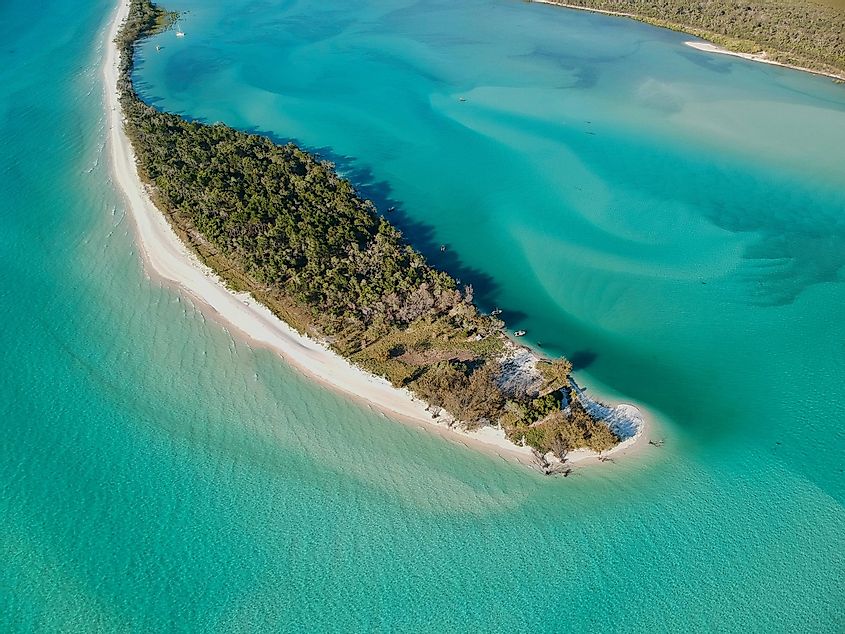 Fraser Island, Australia. Image credit: Guillem Lopez Borras/Shutterstock
Fraser Island, Australia. Image credit: Guillem Lopez Borras/Shutterstock Though technically a continent and not considered an island itself, Australia and its surrounding area is comprised of about 8,222 islands in the Pacific Ocean. Australia itself dominates the islands around its coastal fringe, which range in size from smaller rocks that are not covered by water at high tide to some that are twice the size of the Australian Capital Territory, comprised of Canberra and surrounding townships. One such island is Fraser Island, 124 miles (200 km) north of Brisbane in Queensland, which is the world's largest sand island.
In its external territories, Australia claims many large islands in the Pacific, Indian, and Southern Oceans and the Coral and Timor Seas. Among its oceanic islands is the well-known Christmas Island, isolated in the Indian Ocean, where its closest landmass is Indonesia's Java, 217 miles (350 km) to the north.
8. Philippines - 7,641
 Guyam Island, Siargao, Philipines. Image credit: Adel Newman/Shutterstock
Guyam Island, Siargao, Philipines. Image credit: Adel Newman/Shutterstock The Philippines are one of the most renowned archipelagos, comprised of 7,641 islands southeast of the Asian mainland between Taiwan and Borneo. The islands are divided into three zones: Luzon in the north, Visayas in the central regions, and Mindanao to the south. Luzon is the largest island and lays claim to the capital city, Manila, whereas Visayas is known more for its beaches and coves, and Mindanao is covered in lush forests. Together, the Phillipines make up a land area of about 115,830 square miles (300,000 square km), of which around 772 square miles (2,000 square km) are comprised of water.
9. Japan - 6,852
 Iroha Islands, Japan. Image credit: siro46/Shutterstock
Iroha Islands, Japan. Image credit: siro46/Shutterstock Like the Philippines and Indonesia, the country of Japan is an archipelago, made up of 6,852 islands in the Pacific Ocean with the main four landmasses being Hokkaido, Honshu, Shikoku, and Kyushu. Nearly four-fifths of the islands topography is mountainous, with the Japanese Alps running down the centre of Honshu including the famed Mount Fuji, a cone-shaped volcano that many Japanese people consider to be sacred.
The Ryukyu Islands extend about 603 miles (970 km) south of Kyushu and are comprised of more than 200 small islands nearly reaching Taiwan. In the far southeast are Iwo Jima and a group referred to as the Bonin Islands (or Ogasawara Islands).
10. Chile - 5,000
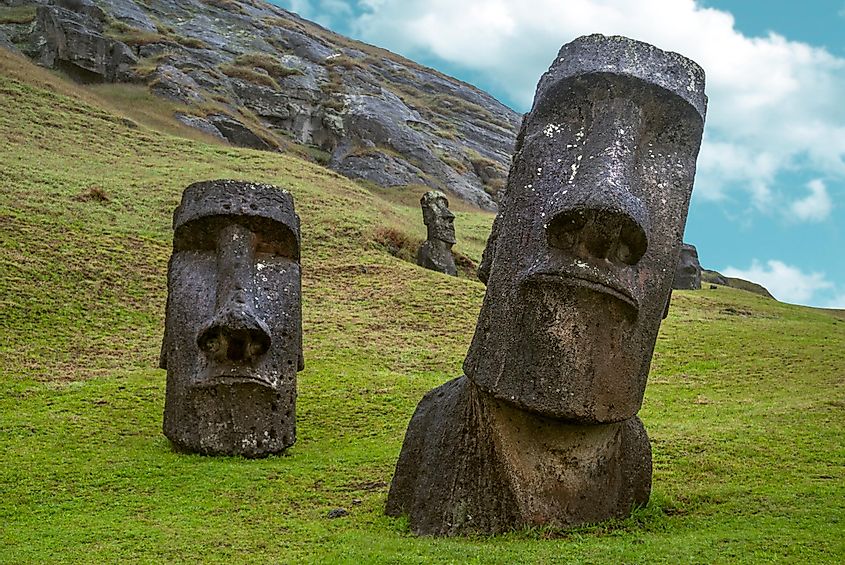 Easter Island, Chile. Image credit: ESB Professional/Shutterstock
Easter Island, Chile. Image credit: ESB Professional/Shutterstock Home to at least 5,000 islands, Chile is known for Robinson Crusoe Island, the only inhabited island in the Juan Fernández Archipelago with a population of about 700. Most of the archipelago is filled with rich flora and fauna rather than people, lending the islands to plant species that rarely exist elsewhere. The islands of Chile, such as Chiloé, are known for rich fishing and farming.
The Tierra del Fuego (Land of Fire), so-named by Magellan due to the numerous fires lit by island inhabitants as he approached in 1520, is made up of thousands of islands, and the Islas Desventuradas are a small, oceanic group of islands about 530 miles (850 km) off of mainland Chile, characterized as a volcanic region.
Islands usually adopt a distinct culture and biodiversity, leading to exotic variations in both human society and the flora and fauna that surrounds it. One island can look and feel drastically different to its neighbor! This diversity contributes to the eclecticism of human life one can discover travelling this wide, beautiful planet.
*****
Top 50 Countries Have The Most Islands In the World
| Rank | Country | Number of islands |
|---|---|---|
| 1 | Sweden | 267,570 |
| 2 | Norway | 239,057 |
| 3 | Finland | 178,947 |
| 4 | Canada | 52,455 |
| 5 | United States | 18,617 |
| 6 | Indonesia | 17,504 |
| 7 | Australia | 8,222 |
| 8 | Philippines | 7,641 |
| 9 | Japan | 6,852 |
| 10 | Chile | 5,000 |
| 11 | China | 5,000 |
| 12 | South Korea | 4,400 |
| 13 | Cuba | 4,195 |
| 14 | Vietnam | 4,000 |
| 15 | North Korea | 3,579 |
| 16 | Greece | 3,054 |
| 17 | Estonia | 1,520 |
| 18 | Thailand | 1,430 |
| 19 | Denmark | 1,419 |
| 20 | Papua New Guinea | 1,400 |
| 21 | Saudi Arabia | 1,285 |
| 22 | Croatia | 1,246 |
| 23 | India | 1,200 |
| 24 | Maldives | 1,196 |
| 25 | Marshall Islands | 1,156 |
| 26 | United Kingdom | 1,000 |
| 27 | Burma | 1,000 |
| 28 | Solomon Islands | 900 |
| 29 | Malaysia | 878 |
| 30 | Greenland | 800 |
| 31 | Falkland Islands | 778 |
| 32 | United Arab Emirates | 700 |
| 33 | Bahamas | 700 |
| 34 | Micronesia | 607 |
| 35 | New Zealand | 600 |
| 36 | Turkey | 500 |
| 37 | Belize | 450 |
| 38 | Venezuela | 418 |
| 39 | Svalbard | 400 |
| 40 | Eritrea | 354 |
| 41 | Palau | 340 |
| 42 | Fiji | 330 |
| 43 | Turks and Caicos Islands | 307 |
| 44 | Ireland | 270 |
| 45 | Colombia | 270 |
| 46 | Hong Kong | 263 |
| 47 | Yemen | 220 |
| 48 | Italy | 210 |
| 49 | Bermuda | 181 |
| 50 | Tonga | 169 |























